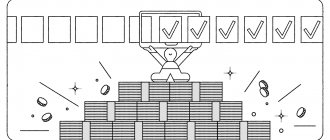Doctors have been dealing with labor anesthesia for a long time: they used drugs that reduce the sensitivity of the nervous system, and gave women light anesthesia during labor. But the previous methods had a significant drawback: the effect of the drugs was short-lived, and in addition, their use sometimes delayed childbirth.
Outstanding doctors of the last century, Platonov and Velvovsky, proposed the so-called psychoprophylactic method of labor pain relief, based on the teachings of Academician I. I. Pavlov. Physiologists have proven that the brain regulates all the functioning of the body. The activity of the nervous system is greatly influenced by the word.
Fear has big eyes: should you be afraid of childbirth?
When a person hears about misfortune, not only does his mood change, but also the functioning of many internal organs. No wonder they say: “Words can kill.” But words can also heal.
The feeling of pain can be suppressed without medication. It is known, for example, that with strong excitement a person does not feel that he is wounded... On the contrary, a patient who is afraid of surgery may scream at the touch of a hand. A person’s mood plays a very important role in his feelings.
For example, in Turkmenistan, according to folk custom, it is considered shameful for women to scream during childbirth, and Turkmen women behave very calmly. And if you ask them, they answer that they did not feel any pain at all or that the pain was tolerable. Women give birth quickly and easily the second, third and subsequent times.
The main enemy of a woman in labor is fear! Previously, religion inspired fear of childbirth. The Bible says: “And the Lord said: in pain you will give birth to your children...”
Was it in vain or not in vain that women used to be afraid of childbirth? Most often for good reason. After all, the peasant woman had not received any medical care before. They gave birth in a field, in a stable, on the dirty floor of a chicken hut. The umbilical cord was gnawed with teeth and crossed with a sickle.
The birth was attended by unkempt “grandmothers.” The ignorant midwife did not know how to stop the fatal bleeding. And if there was no bleeding, then the woman was at risk of “puerperal fever” - blood poisoning. It was not labor pains, but the real danger of death that gave rise to this fear.
Now these dangers do not threaten women in labor, with the exception of isolated cases, all our women give birth in maternity hospitals, in clean conditions. Childbirth is attended by qualified gynecologists and midwives.
If serious complications arise, a specialist will fly by plane or helicopter to any remote corner to provide assistance. And, in addition, all women are under the supervision of experienced doctors and midwives long before giving birth.
What attitudes positively influence the course of labor?
I will name a few positive attitudes: Childbirth is work. Childbirth is a joy. Childbirth is a test. Childbirth is creativity. Let's think about these settings...
Childbirth is work. Try to think of childbirth as a job. Special, specific, completely different from what you do at home or in the office.
What is it? How to work during childbirth?
At the beginning of labor, you have serious internal work to do to maintain a sense of self-control. You will need to maintain contact with the child, feel, understand and accept, and reassure him.
If you start to worry and panic, your child will be in the same state. The fact is that stress hormones that are released into a woman’s blood also affect the child, penetrating into his body through the placental barrier.
At the right moment you will need to push in order to give birth to a baby. And then, accept it, putting it on your chest and laying it on your stomach, hugging, talking and caressing it. And that's your job. You can do it well or poorly, but no one will do it for you! So do it well!
The difficult and very important work will also consist in accepting pain and discomfort and agreeing with it. Calmly endure, understanding the deep meaning of this pain. It will be important to accept the fact that for several hours it will be very difficult for you.
And as in any work, it is important to calculate the forces here.
Childbirth is a marathon. Long distance running. Just like a marathon, the pace of labor at the very beginning is low. The main task is to conserve strength. And at the end of the distance you will need to make a responsible, decisive push - push. How can it be done if all the strength was lost at the start, at the beginning of the journey? If they are wasted on vanity, showdowns, panic, hysterics, screaming?..
To scream or not to scream? Another question that women ask. More precisely, the moment of decision-making may not arise, since almost everyone is convinced that a woman should scream during childbirth. This stereotype is formed “thanks” to the stories of women who have given birth, classical literature and films. They influence to such an extent that a woman does not have an independent, critical choice.
Please scream if you get pleasure from your own screaming and thus “charge yourself.” But screaming drains your strength.
Working with aggressive clients who practice beating their loved ones, not knowing where to throw out their energy, I sometimes advise locking yourself in the car and screaming for five minutes, ten if possible, and observing your own state. Usually, after this “action,” not only the desire to break down goes away, but in general, any desires go away, except the need for rest. I gave this example for a reason. A woman in labor, spending energy on screaming, risks being left exhausted by the end of the marathon. But it’s so important to correctly calculate your strength and not waste it in vain!
Childbirth is a test. It is understood that during childbirth, a woman faces pain and discomfort. It is important to prepare for these tests. How can I do that?
First you need to understand and accept that labor pain is not meaningless. It, unlike other types of pain that signal troubles and malfunctions, malfunctions in the functioning of organs and systems of the body and injuries, is designed to draw attention to the fact that a very important event is happening. This pain indicates the titanic work of the uterus and other organs that carry out the birth of a child. In addition, painful experiences are significant for a woman. During shared experiences, the mother becomes psychologically even closer and becomes closer to her child. Cases are described when animals (mother bear, moose cow) were given painkillers during childbirth. After this intervention, the females did not recognize their cubs. Interesting observations. Something to think about...
And here's something worth thinking about: what is the point of this test? A good friend of mine, a gynecologist with impressive experience, once expressed a deep and wise thought that sank into my soul: “Childbirth is a test of a woman’s maturity.” After thinking a little about this topic, I agreed with her.
There is a feeling that here nature concisely, succinctly and concentratedly explains to a woman what motherhood is. Many parallels can be found.
During childbirth, a woman is faced with irreversibility: you can no longer stop the birth process. It will be the same with motherhood: it is irreversible. You become a mother for life.
And in motherhood and childbirth, not everything depends on desire: whether you want to or not to give birth today (maybe there were plans, or the date was not suitable, or the circumstances were not the same?) the process starts without the woman’s consent. Parallels again. During the first year of a child’s life, young mothers are well aware of how dependent they become on the child. And the baby is little concerned about the mother’s plans, health status or desires (for example, to sleep). He needs to eat, play, walk, or generally just wants to be in his mother’s arms!
Both in childbirth and in motherhood, a woman needs to stock up on a huge portion of patience and strength!
But oddly enough, sometimes waiting for severe pain does a good deed. We are talking about those cases when a woman, having heard enough stories about unbearable suffering, expects great torment. She endures the pain, knowing that there will be more serious trials. And so the midwife tells her that it’s time to push. And the woman, ready for very serious tests, is at a loss: “How is this all?”
Have some patience! No matter how bad you feel, ask yourself: “And if it hurts even more, will I be able to stand it?” And be sure to find an opportunity to answer yourself: “Yes.” Always have an extra reserve of patience. When the contraction is the most painful, know that it can be even more painful.
Here I remember a children's fairy tale about a hare who was scared in winter. And they were so intimidated that severe frosts came, and the bunny thought: “No, this is not winter, it will be completely cold in winter.” Now strong snowstorms are blowing, and the bunny again thinks: “It’s nothing yet... Winter will come...”. And then the drops began to run, the streams ran, the sun warmed up, and all the animals shouted: “Spring, spring!” And the little bunny asks in bewilderment: “So where is that fierce and terrible winter?” That’s how our women, ready for serious trials, ask in bewilderment: “Are you having a baby yet? This is all?"
Childbirth is creativity! Suddenly? But it is at this moment that you will be able to show your creativity, because during contractions you will need to keep yourself busy with something. Occupy both body and thoughts. And you will need to find a certain number of ways to switch your attention in order to survive the contractions. And what is very important is that all techniques, techniques, ideas for working with pain should be used, experimenting, at the most desperate moment. When imagination and patience are at their limit.
But we'll talk about this a little later.
Childbirth is a joy. This installation helps to give birth safely. Find the strength to enjoy this wonderful event - the birthday of your child, a new person. I can help you with this.
Perhaps you will be warmed by the thought that very soon you will receive your heir in your hands. Not everyone can experience this pleasant event. For many, only once. Men in general, by definition, cannot give birth to a child. For women, childbearing age is limited.
In my line of work, I work with women undergoing infertility treatment. They are ready to pay any money, undergo multiple medical examinations, far from painless procedures, undergo operations, if only they were given the happiness of conceiving, bearing and giving birth to a child. The happiness that you have. Appreciate it! Nowadays, conceiving, bearing and giving birth to a child is a great success!
Very soon you will experience unforgettable feelings of joy, delight from the fact that you are putting your baby to your breast, from the way he looks at you, from how much he looks like you or your loved ones.
During childbirth you will have a new experience for you. You will learn something that you did not know or experience before.
You will have a child who will help you develop all your abilities and talents. In motherhood, you will be able to realize your potential as a teacher and teach your child everything that you yourself know. And experience the joy of how your baby makes his first discoveries, develops, and grows. There is something to live for!
Master your fears! Many articles and studies have been written about the connection between fear and pain. Fear of pain destroys the harmony of relationships in the structures of the brain, sharply reduces the pain threshold, as a result of which a woman perceives those painful stimuli that normally should not penetrate consciousness. The so-called psychogenic component of labor pain occurs. And the more afraid a woman is, the more intense the pain she feels. Pain and fear mutually reinforce each other.
Pregnancy management by an experienced doctor guarantees a smooth birth
From the first months of pregnancy, knowing the health status of the observed patient, taking into account how her pregnancy and childbirth proceeded earlier, how the pregnancy is developing now, the doctor leading the pregnancy or the midwife is able to foresee possible complications.
If a pregnant woman suffers from hypertension, heart or kidney disease, if in the past she has undergone surgery on the uterus or appendages, if the doctor notes an abnormal position of the fetus, narrowing of the pelvis or any deviations from the normal course of pregnancy, such women are placed in a hospital in advance, before giving birth. , treat, try to prevent possible complications.
Thanks to this approach to maternity care, deaths from childbirth have become rare in our country. Fear of the upcoming birth is unfounded.
Fear of giving birth to a premature baby.
All you need to know in this case: even if it happens that the baby is born ahead of schedule, modern medicine will help cope with such a situation! A child born at 22 weeks is quite viable, even babies weighing only 500 grams grow up healthy.
Try to think positively and not create additional stress for yourself and your baby, this will only bring anxiety. Get ready for the difficult work that lies ahead of you and your body during the birth process. But this job is quite up to you! Everything will be fine.
The method of Platonov and Velvovsky: how to relieve pain with words
Platonov and Velvovsky developed a method in which the doctor’s word becomes a means of pain relief.
- The first task of the doctor is to dispel the fear of childbirth. If a woman comes to the maternity hospital calm, not expecting any troubles or misfortunes, she will perceive what is happening completely differently.
- Another task of the doctor is to teach the woman in labor to be active during childbirth. He tells the patient about the structure of the female genital organs, the birth canal, what happens during different periods of labor: during the dilatation of the cervix, during the period of pushing, the birth of the child, and the placenta. After this, the doctor teaches the woman the correct behavior during childbirth.
How can a mother help her child?
Communicating with him on the eve of the birth, she mentally prepares him for the upcoming exit, tells how she and his dad are waiting for him, arranging his room and that the world into which the child will come is beautiful and hospitable. In positive words, mom describes the road ahead, the way out - the light at the end of a difficult path - and their meeting. During a fight, the mother remembers how difficult it is for the child in a changing world, and supports him: “Everything is fine. I'm with you". Each contraction can be imagined as a child’s step towards his mother’s embrace. At the end of the contraction, the mother approves of the baby and praises him. And so they move together from contraction to contraction throughout the first stage of labor. In her attempts, the mother’s task is to separate the child nourished by her body from herself and hand him over to the big world. At the end of the birth, the main reward awaits her - the opportunity to embrace the newborn in her arms. They have a long way ahead, but, as in childbirth, the mother will continue to perform her two main functions - to accompany the child with her care and love and to separate him from herself, so that at the end of the road she will see him firmly standing on his own feet, having built own relationship with the world.
How to behave correctly during childbirth
- During childbirth, a woman’s body does a lot of work, spends a lot of energy, and needs increased amounts of oxygen. Therefore, a woman in labor needs to force herself to breathe evenly and deeply during contractions.
- You need to learn to control your muscles well. Sharp muscle tension increases the sensation of pain. In order not to feel pain during contractions, it is enough to learn to relax the muscles of your body.
- During the birth of a child, a woman must be able to push correctly in order to quickly force the baby’s body to pass through the birth canal. The more correctly a woman behaves during childbirth, the faster it ends.
Conversations with a child
The baby also has a hard time during childbirth. Imagine, he sits in his cozy nest for 9 months, and suddenly some force pushes him into the unknown. Fear of childbirth in expectant mothers is often accompanied by concern for the child: how he will survive this process. Talking with your baby, out loud or mentally, is very useful for setting the mood for an easy birth. Firstly, when you try to calm someone down, you surprisingly calm down yourself. Secondly, the baby feels supported and cared for, and the emotional connection between mother and child is established.
Special techniques to reduce pain
Pain during childbirth still exists; it is caused by the fact that certain nerve endings are irritated during contractions of the uterus.
To suppress these painful sensations, special techniques have been developed: stroking certain areas of the abdomen in combination with deep breathing, pressing certain points in the sacrum and bony protrusions of the pelvis.
When stroking and pressing certain areas of the body, the nerve endings located there are irritated. Doctors determined exactly which nerve endings needed to be stimulated. The signals that come from these nerve endings to the brain “quench” pain signals coming from the uterus. Therefore, the pain “decreases and even disappears completely.
The psychoprophylactic method of pain relief is accepted everywhere in our country - in large urban obstetric institutions and in small rural maternity hospitals.
Preparation for childbirth is usually carried out in 5-6 sessions by gynecologists and midwives. This method gave remarkable results, and it was successfully used abroad.
We are waiting for the birth to begin
Are you expecting a baby? Congratulations! One of the most important events in life is already close, and many mothers worry in vain, expecting severe pain or worrying about the process itself. Your body is specially created for childbirth and is completely ready for it. And experienced doctors will take care of you, their knowledge, skills and attention will help the baby be born.
But I still wonder on what day there will be one more person on our planet. How to calculate the due date? The approximate date of the expected birth is known to every expectant mother from the very beginning, from the moment the doctor calculates it. But you need to know that childbirth can occur from the full 37th to the end of the 42nd week, that is, on average, pregnancy lasts from 260 to 293 days, so for sure “that very” day cannot be known to anyone, except perhaps the baby himself.
How do you know when labor is approaching? You can identify indirect signs, but remember that everything is individual.
- Abdominal prolapse. For those expecting their first child, the belly drops 2 to 4 weeks before giving birth; for mothers who are not giving birth for the first time - the day before. This happens because the baby feels ready to be born and changes position in the abdomen, occupying the presenting part (that is, the one that is now located at the bottom of the uterus) in the pelvis. At the same time, the navel protrudes.
- Heartburn goes away. Thanks to this, the feeling of pressure on the diaphragm goes away, breathing becomes easier, and the symptoms of heartburn and belching go away.
- Increased urge and change in stool. At the same time, the urge to go to the toilet becomes more frequent, and about a week before birth, the stool becomes liquid - due to the pressure of the fetus on the rectum and the effect of activated hormones on the intestines.
- Pain in the lower back. There may be nagging, painful, sometimes cramp-like sensations in the perineum and pelvis due to pressure and stretching of the tissues of the sacrum. During this period, the expectant mother may find it uncomfortable to walk and sit, and it may be difficult to find a comfortable position during sleep. “False” contractions may be felt, but if they are irregular and the interval between them does not decrease, then it is too early to talk about the onset of labor.
- Lack of appetite. Most often, before giving birth, expectant mothers do not even want their favorite food. As a rule, 1–2 weeks before the birth of a child, pregnant women lose up to 2 kg due to excess fluid. This is how the body prepares for childbirth, when the mother will need additional flexibility and lightness.
- Changeable mood. More and more hormones are released, and the pregnant woman’s mood changes hour by hour. The periods when the expectant mother is active and cheerful are replaced by a desire to retire and be in silence.
- The baby moves less. His new position—usually head down—makes him uncomfortable to move.
- Mucous discharge. During pregnancy, the cervix is closed by a mucus plug, and shortly before the baby is born, it comes off. This can happen right before childbirth, at the beginning of labor, and 1 - 2 weeks before it. It is thick, transparent, slightly yellowish, often mixed with blood. This is normal, however, if the discharge is bloody, you need to go to the doctor as soon as possible to make sure that there are no complications, or to deal with them quickly.
Not everyone knows that water can leak or break before birth.
Some unpleasant sensations can cause discomfort and ruin your mood, but try to concentrate on the joyful anticipation: all these are temporary phenomena, and besides, very soon you will meet your baby for the first time!
Does psychoprophylactic training always give ideal results?
Of course, not always. During childbirth, sometimes minor complications occur: poor compliance of the cervix, dense amniotic sac. These complications are not dangerous to the woman's health, but they increase the feeling of pain.
An attentive doctor will install them in time and take measures to eliminate the pain. Nowadays, many maternity hospitals combine psychoprophylactic preparation with the use of anesthesia.
Motherhood is happiness and medicine is making every effort to ensure that this happiness comes to our women without fear and pain.
Is your husband ready for childbirth?
It is important when a loved one supports you in everything. Then any difficulties are much easier to bear. If a husband and wife are planning a joint birth, the man prepares for this event in advance. But even if you decide to give birth the old fashioned way, in the company of doctors, you still need your spouse to know what awaits his wife. Of course, it’s not worth shocking him with videos of other people’s births. But if he learns, say, to do a back massage, that will be a big plus. The support of a strong shoulder will help the woman in labor concentrate and calmly get to the maternity hospital without hysterics.
The truth about prenatal depression
According to statistics, every fourth pregnant woman experiences prenatal depression. This violation is dangerous not only for the woman herself, but also for her child. Pregnant women who have experienced prenatal depression have an increased risk of preterm pregnancy. This is explained by the fact that women who experienced depressive disorders during pregnancy have a significant increase in the level of stress hormone in their blood. This hormone is known to be capable of triggering premature onset of labor. That is why early detection of prenatal depression and its timely correction is very important. Especially because half of the women who experience it continue to suffer from depression after they give birth.
Signs of prenatal depression:
- reduced ability to work; - decreased attention, inability to concentrate on any specific task; — certain difficulties in decision making; - increased anxiety and irritability; - tearfulness; - insomnia, sleep disorders not related to pregnancy; - increased appetite, or vice versa, its absence; - rapid weight gain or loss not related to pregnancy; - constant sadness or guilt; - decreased interest in sexual relations; - fear of being parents; - thoughts of death and suicide.
It is too difficult for a pregnant woman to determine the presence or absence of these symptoms. Her loved ones nearby (husband, parents, brothers, sisters, girlfriends) play an important role in this.
What other neuroses are there?
According to world statistics, 15 to 25% of children, mostly males, suffer from various neuroses. Age range - from one and a half years to adulthood.
Neurasthenia is far from the only nervous system disorder that affects people at an early age. There are quite a large number of neuroses, the symptoms and signs of which are similar, but there are also fundamental differences.
Preschool children and adolescents may be susceptible to types of nervous disorders such as:
- fear neurosis - the patient begins to panic fear of darkness, fire, loneliness, death, etc.;
- hysteria - most often manifests itself in childhood in the form of screams, crying, falling to the floor;
- Hypochondria is more common in teenagers. Morbid fear for one’s health, inventing non-existent diseases;
- obsessive movement neurosis - various phobias are accompanied by nervous tics: blinking, shrugging shoulders, licking lips, etc.;
- depressive neurosis – depression, desire for solitude;
- logoneurosis - stuttering, occurs due to muscle spasms of the speech apparatus;
- Enuresis – involuntary urination;
- somnambulism – sleep disorder, sleepwalking, nightmares;
- Anorexia is a neurotic eating disorder.
As already mentioned, unfortunately, not all parents believe that neurasthenia developing in children and adolescents can pose a serious threat to health. Some think that these are temporary age-related difficulties or whims, others do not notice any changes in the child’s behavior at all.
Causes of neurasthenia
The development of the disease is usually preceded by a traumatic factor.
Mental trauma is a sensory reflection of some event in the child’s mind, which has a depressing effect on him, worries him and lasts for quite a long time. The most common reason for the development of neuroses in childhood and school age is, oddly enough, overly “caring” parents. Their desire to give their child what they did not have, overprotection and constant control overload the child not only physically, but also psychologically.
From birth, children have individual temperament, capabilities and limitations. Not all parents understand this. Wishing only the best for the child, they burden him with additional activities, often without even considering his interests. A student’s day can be scheduled minute by minute: after school – sports training, music or art school, swimming pool, English, tutor, homework, etc.
Afraid of upsetting his parents and realizing that they are trying for his good, the baby tries to do everything: study diligently, attend clubs. However, somewhere inside, fatigue and protest accumulate. This is a classic development of neurasthenia. At some point, the child breaks down, becomes irritable and aggressive, or, conversely, whiny and inhibited.
If there are several children in the family, then problems may begin due to jealousy towards the youngest family member. In teenagers this is more pronounced; it seems to them that their parents no longer love them, they don’t need them, since a “new” baby has appeared.
The situation is especially aggravated when the elder is often told that he is already an adult and has a special responsibility, and he himself missed the moment when he grew up. He is still small at heart and still needs parental love and support. Trying to meet the expectations of adults, the child experiences nervous overstrain, leading to frustration.
Triggers for the development of neurasthenia are also:
- negative family environment - scandals, fights, divorce of parents;
- social and everyday problems;
- mistakes in education;
- parental use of alcohol or drugs;
- emotional psychological trauma;
- severe fear;
- hereditary diseases;
- lack of sleep;
- reduced immunity;
- frequent respiratory tract infections;
- acquired physical injuries;
- digestive system disorders.
Most often there is not one, but several reasons. Due to this, diagnosis and treatment are delayed.








